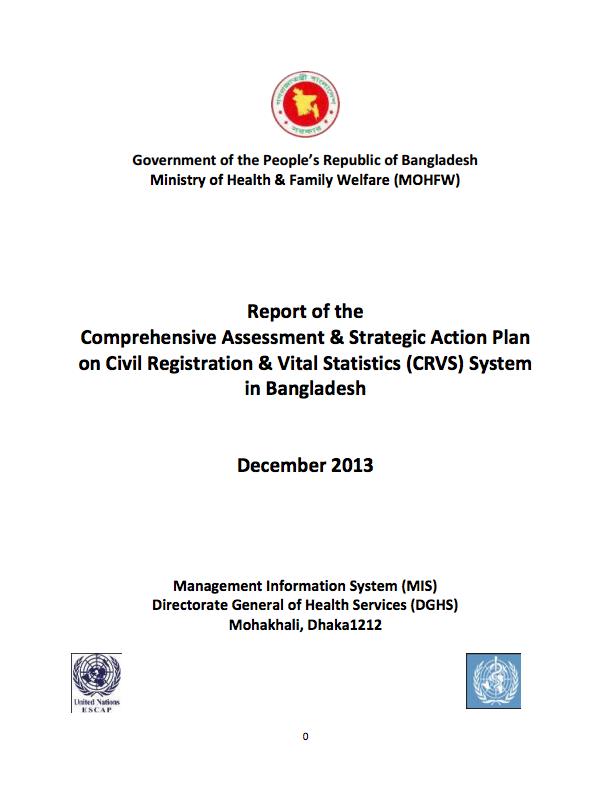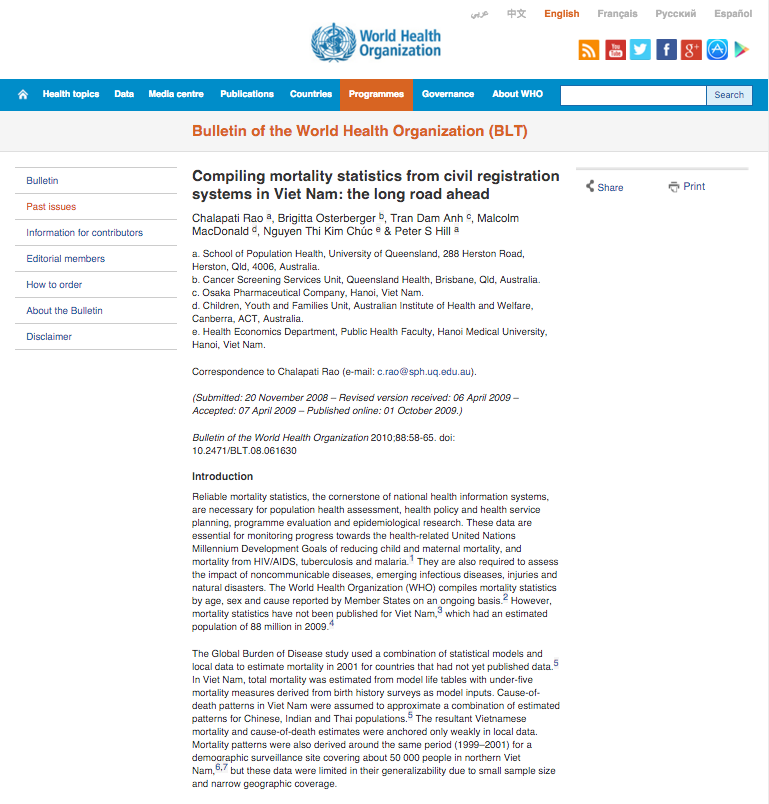Death Registration Infographic
This document highlights the importance of death registration in Africa and presents the status of death registration, what is currently being done and recommendations for improvement.

|
The CRVS community in Asia and the Pacific has reflected on where it stands at the midpoint of the CRVS Decade (2015-2024) during the Second Ministerial Conference. Following this celebration of progress, many of our partners and member countries are leading actions to fill the remaining gaps. To learn more about CRVS in Asia and the Pacific, please subscribe to our newsletter, which offers a monthly panorama of CRVS actions throughout the region Previous editions can be found here. |
This document highlights the importance of death registration in Africa and presents the status of death registration, what is currently being done and recommendations for improvement.

Tool developed for African context by PLAN international in collaboration with ECA. Aims to digitalize existing documentation and state records regarding CRVS.

Short explanation of methodology and sources for the calculation the coverage and quality of birth and death registration data.

This international curriculum describes minimum requirements for the content of training in certifying causes of death. Its purpose is to provide a basis for education for all countries.

An assessment of the Civil Registration and Vital Statistics (CRVS) system in Bangladesh was undertaken to identify gaps. Following this process, a CRVS Strategic Action Plan has also been developed. The activities were carried out from September 2012 to December 2013.

This paper presents the findings of a case study of civil registration and vital statistics systems in three provinces in Viet Nam. The assessment framework used explores administrative, technical and societal issues that influence civil registration systems to critically examine the current availability and adequacy of the data that the system records.

The CoDEdit tool is intended to help producers of cause-of-death statistics to strengthen their capacity in performing routine checks on their data in order to minimize errors. While the CoDEdit tool is applied at data compilation stage, its primary purpose is to warn and flag basic gross errors, alert about possible misuse of codes and finally provide a summary of the data set.

The value of good-quality mortality data for public health is widely acknowledged. While effective civil registration systems remains the ‘gold standard’ source for continuous mortality measurement, less than 25% of deaths are registered in most African countries. Alternative data collection systems can provide mortality data to complement those from civil registration, given an understanding of data source characteristics and data quality.

The section on the cause of death on the death certificate is identical worldwide. It has two parts - called Part I and Part II, and a section to record the time interval between the onset of each condition and the date of death.
Part I - is used for diseases or conditions that form part of the sequence of events leading directly to death.
Part II - is used for conditions which have no direct connection with the events leading to death but whose presence contributed to death.

This document highlights the importance of birth registration in Africa and presents the status of birth registration, what is currently being done and recommendations for improvement.
